Introduction
In property management, few factors influence tenant satisfaction as much as responsiveness. When tenants reach out with questions, concerns, or requests, the speed and quality of the response often shape their overall perception of the landlord or management company.
A fast, professional response reassures tenants that their concerns are taken seriously, builds trust, and reduces frustration. On the other hand, delayed replies — even when the issue itself takes time to resolve — can erode confidence and damage tenant relationships.

The question of “How quickly do you respond to tenant queries?” is not just a measure of customer service; it’s a reflection of a property manager’s operational efficiency, communication strategy, and commitment to tenant care.
Why Response Time Matters in Tenant Communications
1. Tenant Satisfaction and Retention
Tenants who feel ignored or neglected are less likely to renew their leases. Quick responses send a clear message: you matter.
2. Conflict Prevention
Many disputes arise not from the issue itself, but from a lack of communication. A timely acknowledgment can prevent small problems from escalating into major grievances.
3. Reputation Management
In the age of online reviews, responsiveness directly impacts ratings on Google, Yelp, and rental platforms. Prospective tenants often base decisions on feedback about communication quality.
4. Operational Efficiency
Responding quickly allows managers to triage issues early, delegate tasks, and prevent bottlenecks in workflows.
5. Legal and Compliance Considerations
In some jurisdictions, landlords are legally required to respond to certain types of tenant queries (e.g., repair requests, safety hazards) within a defined timeframe.
Industry Standards for Response Times
While response times vary by property type, jurisdiction, and management style, there are widely accepted benchmarks.
- Immediate or Same-Day Response (within 24 hours):
- Emergency issues (e.g., gas leaks, flooding, fire hazards).
- High-priority queries about safety or habitability.
- Essential services outages (water, heating, electricity).
- Standard Response (24–48 hours):
- Routine maintenance requests.
- Questions about rent, billing, or lease terms.
- General inquiries (e.g., parking, community amenities).
- Extended Response (3–5 business days):
- Non-urgent feedback or suggestions.
- Policy clarifications.
- Requests that require research, third-party vendor input, or management approvals.
Tenants don’t always expect an instant solution — but they do expect acknowledgment and a clear timeline.
Acknowledgment vs. Resolution
It’s important to distinguish between acknowledging a query and resolving it.
- Acknowledgment: Confirming receipt of the query and providing an estimated timeline for resolution. This should happen quickly, ideally within 24 hours for non-emergencies and immediately for urgent issues.
- Resolution: Completing the actual action requested (e.g., repairing a broken appliance, clarifying billing discrepancies). Depending on the complexity, this can take hours, days, or even weeks.
Example: If a tenant emails about a leaky faucet on a Sunday night, an immediate auto-response plus a personal reply Monday morning acknowledging the issue reassures the tenant. Scheduling the repair for later in the week is acceptable as long as communication remains consistent.
Factors That Influence Response Speed
1. Type of Query
Urgency dictates response times. Emergency safety issues demand immediate attention, while general inquiries may be handled in a longer window.
2. Size and Structure of the Property Management Team
- Large firms with dedicated call centers can respond faster.
- Independent landlords may take longer, especially outside business hours.
3. Communication Channels Used
- Phone/SMS: Typically elicit faster responses due to immediacy.
- Email: Standard response expectation is 24–48 hours.
- Tenant portals/apps: Often automated acknowledgments are instant, with follow-up within one business day.
4. Technology Integration
Automation tools, CRM systems, and tenant portals improve response times by streamlining workflows and reducing human delays.
5. Tenant Expectations and Agreements
Lease agreements sometimes specify response windows, particularly for maintenance requests, setting clear expectations upfront.
Best Practices for Setting Response Standards
- Create a Tiered Response System
Define timeframes for different query categories (emergency, urgent, routine). Share this with tenants during onboarding so expectations are aligned. - Use Automated Acknowledgments
Set up email or portal auto-replies confirming receipt of requests, with reference numbers and expected timelines. - Establish SLAs (Service Level Agreements)
For large property management companies, formal SLAs can hold staff accountable to tenants. - Train Staff Consistently
Ensure all team members understand the importance of quick acknowledgments, even if resolution will take longer. - Track and Measure Performance
Monitor average response times and resolution times through property management software. Use KPIs to drive improvements.

Communication Examples by Scenario
Emergency Query Example
- Tenant: “The smoke detector is beeping, and I smell gas.”
- Response: Immediate phone call or SMS acknowledging the danger, dispatch emergency services, and follow up with an incident report.
Routine Query Example
- Tenant: “Can I get a copy of my payment history for tax purposes?”
- Response: Acknowledge within 24 hours, deliver the document within 2–3 business days.
Feedback/Non-Urgent Example
- Tenant: “Would you consider adding more recycling bins to the property?”
- Response: Acknowledge receipt and note it for the next community update or board meeting. Timeline may extend to weeks.
Advanced Workflows for Faster Tenant Response
1. Centralized Communication Systems
Managing tenant queries across multiple channels (calls, emails, SMS, portals) can create delays. A centralized system consolidates all messages into one dashboard.
- Benefit: No missed queries and better tracking of response times.
- Implementation: Property management software like Buildium, AppFolio, or Yardi integrates all communication streams.
2. Triage and Prioritization
Not all tenant queries are equal in urgency. Implement a triage system that categorizes requests automatically:
- High Priority: Life-safety issues, utility outages, security risks.
- Medium Priority: Maintenance requests that affect comfort but not safety (e.g., broken appliances).
- Low Priority: General inquiries, feedback, or policy clarifications.
This ensures critical issues get immediate attention while still acknowledging routine concerns.
3. Automated Escalation Workflows
Automation ensures that if a query is not addressed within a set timeframe, it escalates.
- Example: A maintenance ticket unresolved after 24 hours automatically pings a manager.
- Example: Emergency calls unanswered within 10 minutes escalate to a backup contact.
4. Response Templates
Create standardized templates for common queries (rent reminders, maintenance updates, policy clarifications).
- Saves time and ensures consistent messaging.
- Templates should still allow for personalization to avoid sounding robotic.
5. Self-Service Options
Provide tenants with resources that reduce query volume:
- FAQs on portals: Cover recurring questions (rent due dates, pet policies, guest rules).
- Knowledge base: Simple guides for basic troubleshooting (resetting breakers, checking thermostats).
- Community bulletin boards: Digital or physical, with announcements and updates.
By empowering tenants to find answers independently, property managers can dedicate more time to urgent issues.
Role of Technology in Response Speed
1. Property Management Software (PMS)
Platforms like AppFolio, Buildium, and Yardi streamline communication by:
- Automating acknowledgment of requests.
- Assigning tasks directly to maintenance staff.
- Providing tenants real-time status updates.
2. AI Chatbots
AI-driven chatbots integrated into portals or websites answer routine queries instantly.
- Examples: Rent due dates, office hours, move-out procedures.
- They can escalate more complex queries to human staff.
3. CRM Integration
Linking tenant data to Customer Relationship Management (CRM) systems allows staff to:
- Access tenant history quickly.
- Personalize communication.
- Track unresolved issues in one place.
4. Mobile Apps
Tenant-facing apps provide instant communication and notifications.
- Tenants can log requests anytime.
- Managers can send push alerts for urgent building updates.
5. Analytics and KPIs
Tracking performance metrics helps identify bottlenecks:

- Average response time per channel.
- Resolution time per request type.
- Tenant satisfaction scores post-resolution.
Case Studies
Case Study 1: Residential Apartment Complex
- Challenge: Tenants complained about slow maintenance responses (average of 72 hours for acknowledgment).
- Action: Implemented a PMS with auto-acknowledgment and mobile app requests.
- Result: Acknowledgment times dropped to under 2 hours, boosting renewal rates by 15%.
Case Study 2: Commercial Office Building
- Challenge: Businesses needed rapid updates during HVAC failures.
- Action: Deployed SMS alerts and a triage system for urgent service tickets.
- Result: Emergency response time reduced from 3 hours to 30 minutes, improving tenant satisfaction scores significantly.
Case Study 3: Student Housing Community
- Challenge: Overwhelming call volume during move-in season delayed responses.
- Action: Added an AI chatbot to answer FAQs about keys, parking, and internet setup.
- Result: Reduced incoming queries by 40%, allowing staff to focus on urgent issues.
Best Practices to Maintain Consistently Fast Responses
- Set Clear Internal SLAs
Define service level agreements for acknowledging and resolving queries. Example:
- Emergencies: Immediate acknowledgment, resolution within 2 hours.
- Routine maintenance: Acknowledge within 24 hours, resolve within 3–5 days.
- Train Staff Regularly
Provide training on communication skills, prioritization, and using technology effectively. - Leverage Automation Without Losing the Human Touch
Use templates and bots for speed, but personalize when possible to maintain empathy and professionalism. - Schedule Regular Performance Reviews
Track KPIs like average response time and compare against benchmarks. Reward staff for meeting or exceeding targets. - Align Tenant Expectations
Communicate expected response windows during onboarding and lease signing. Transparency prevents frustration. - Have After-Hours Protocols
Establish clear emergency contacts and backup escalation processes for nights and weekends.
Legal and Compliance Factors
- Emergency Response Laws: Some jurisdictions require landlords to address safety-related issues within hours or days.
- Notice Requirements: Response timelines may be codified in rental regulations (e.g., repair requests).
- Fair Housing Compliance: All tenants must receive equitable response times regardless of background or demographics.
- Data Privacy: Communication systems must comply with data protection laws like GDPR or CCPA.
Conclusion
The speed at which tenant queries are acknowledged and resolved is one of the strongest indicators of property management quality. Fast responses build trust, prevent disputes, and strengthen tenant retention.

By combining structured workflows, modern technology, staff training, and transparent expectations, property managers can consistently meet or exceed industry benchmarks. In competitive rental markets, responsiveness isn’t just good customer service — it’s a strategic advantage that enhances reputation, reduces vacancies, and drives long-term profitability.
FAQs
1. How fast should I respond to tenant maintenance requests?
Emergencies should be acknowledged immediately. Routine requests should be acknowledged within 24 hours and resolved in 3–5 business days.
2. Do tenants expect 24/7 responses?
Not always, but they do expect clear after-hours protocols and immediate responses for emergencies.
3. What’s the difference between acknowledgment and resolution?
Acknowledgment means confirming receipt of the query and providing a timeline. Resolution is the actual fix or answer.
4. How can small landlords maintain fast response times?
Use automation tools (auto-replies, portals) and establish clear escalation procedures for emergencies.
5. Does faster response always mean higher costs?
Not necessarily. Automation, self-service tools, and efficient workflows can improve response times without significantly increasing costs.

